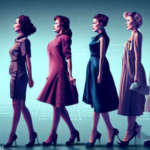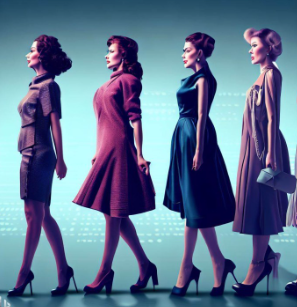Introduction
Clothing is more than just a covering for the body; it is a form of expression, a reflection of culture, and an ever-evolving art. Throughout history, humans have used clothing not only to protect themselves from the elements but also to communicate, signify status, and celebrate identity. In this blog, we will explore the multifaceted world of clothing, delving into its cultural significance, the artistry involved in fashion, and the ongoing evolution of styles.
Cultural Tapestry: Clothing as a Reflection of Identity
Clothing serves as a powerful tool for expressing cultural identity. Different regions and communities around the world have distinct traditional garments that tell stories of heritage, values, and customs. From the vibrant patterns of African textiles to the intricate embroidery of Indian saris, clothing serves as a visual language that speaks volumes about one’s roots. In a globalized world, the fusion of traditional and modern elements has given rise to unique and eclectic styles that bridge the gap between the past and the present.
Fashion as Art: The Canvas of Creativity
The world of fashion is a canvas where designers unleash their creativity, blurring the lines between clothing and art. Fashion designers are not merely creators of garments; they are artists shaping cultural narratives and challenging societal norms. Runway shows and fashion weeks become galleries for these wearable masterpieces, showcasing avant-garde designs that push boundaries and redefine conventional notions of beauty. The intricate details, innovative materials, and bold statements contribute to the artistic tapestry that is contemporary fashion.
Sustainable Style: Clothing for a Conscious Future
As the world becomes more aware of environmental issues, the fashion industry is experiencing a paradigm shift towards sustainability. From eco-friendly fabrics to ethical production practices, consumers are increasingly demanding clothing that aligns with their values. Sustainable fashion not only addresses environmental concerns but also emphasizes the importance of fair labor practices and social responsibility. The rise of second-hand and upcycled fashion further emphasizes the shift towards a more mindful and eco-conscious approach to clothing.
The Evolution of Trends: From Vintage to Futuristic
Fashion is a dynamic entity that constantly evolves, drawing inspiration from the past, present, and future. Vintage revivals bring back styles from bygone eras, celebrating nostalgia and timeless elegance. Simultaneously, futuristic designs explore innovative materials, cutting-edge technologies, and avant-garde concepts. The cyclical nature of fashion reflects society’s ever-changing tastes and influences, creating a dynamic dialogue between the past and the future.
Conclusion
Clothing is a dynamic and ever-evolving aspect of human culture, encompassing tradition, artistry, and innovation. From the intricate tapestries of cultural identity to the avant-garde expressions of fashion as art, the world of clothing is a fascinating realm where creativity knows no bounds. As we navigate the complexities of sustainable fashion and witness the continual evolution of trends, one thing remains certain – clothing is not just a necessity; it is a canvas for expressing our individuality and shaping the cultural landscape for generations to come.





